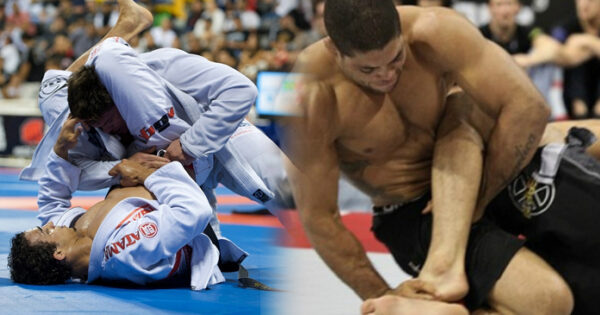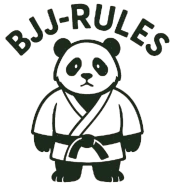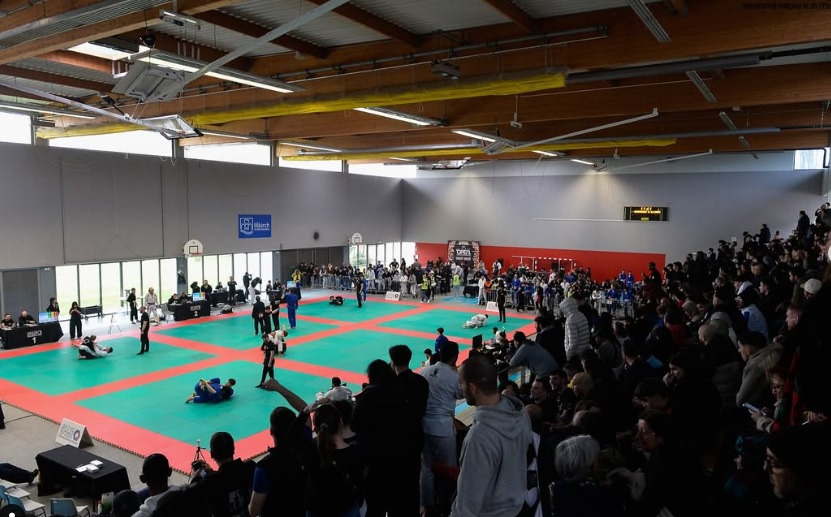Long unknown outside of specialist circles, Brazilian jiu-jitsu booming in France in recent years. More and more clubs are opening, competitions are multiplying, and social media is flooded with videos, tutorials, and spectacular highlights.
But why the sudden enthusiasm? What draws so many people from all walks of life to the mats? In this article, we look at the reasons behind the explosion of Brazilian jiu-jitsu in France — and why it’s only just beginning.
A Growth That’s No Longer Under the Radar
In just a few years, Brazilian jiu-jitsu has seen real growth in France. Once a niche martial art for a handful of passionate practitioners, it’s now expanding rapidly. The number of clubs is skyrocketing, competitions are widespread, and the mats are filling up.
According to estimates from federations and industry insiders, France now has several thousand licensed practitioners — and many more who train outside of official structures. From big cities to rural areas, dojos are popping up with classes for all ages, levels, and goals — from leisure to self-defense to high-level competition.
Competitions, once rare and regional, have taken on a whole new scale. IBJJF tournaments, AJP Tour events, local opens, interclubs — almost every weekend, there’s an event somewhere in France. This national momentum is pushing clubs to become more structured and responsive to demand.
Social media has also played a huge role. On Instagram, YouTube, and TikTok, more and more BJJ content is emerging: match highlights, technique breakdowns, belt promotions, testimonials… Accounts like @unik, @cfjjbfrance, or @wao.jjb are helping make the sport more mainstream. BJJ isn’t just practiced in the shadows anymore — it’s watched, shared, and discussed.
An Accessible Yet Demanding Sport
BJJ’s success in France is also thanks to how accessible it is. Unlike other martial arts or combat sports, no prior physical or technical skills are required. You don’t need to be flexible, muscular, or experienced: anyone can start, regardless of age or fitness level.
The required gear is also minimal: a gi and a belt, or in No-Gi, just shorts and a rashguard. No gloves, no complicated gear — a huge plus for newcomers.

But while it’s easy to start, BJJ is hard to master. It’s a technical and subtle sport that demands time, consistency, and humility. The learning curve can feel slow at first, but that’s also what makes it so rewarding. The belt system, especially, gives a sense of structured progression.
In short, BJJ manages the rare feat of being both inclusive and deeply challenging — a combination that draws athletes, curious minds, and total beginners alike.
Inspiring French Figures
BJJ’s growth in France isn’t just about the sport itself — it’s about the people who embody it. High-level athletes, passionate coaches, and thriving clubs all play a vital role.
Several French competitors are starting to make waves internationally. Athletes like Reda Hamzaoui and Léon Larman are putting France on the map at events like the AJP Tour and IBJJF championships, inspiring a new generation of practitioners.
Meanwhile, French coaches are reaching new levels of excellence — often after years of training in France, Brazil, or the U.S. They offer well-structured teaching adapted to all levels, far from any macho or aggressive clichés.
Some clubs have even become local institutions. Whether in Paris, Lyon, Marseille, or smaller towns, they’re building identities based on family vibes, competitive spirit, or ultra-rigorous instruction. There’s something for everyone — which makes the French BJJ scene rich and vibrant.
The Influence of ADCC, MMA, and YouTube
BJJ’s visibility has also skyrocketed thanks to its connection with MMA, the spectacular ADCC tournaments, and online video platforms where learning has never been more accessible.
UFC fans often discover BJJ by watching incredible ground game exchanges. Grappling mastery, submissions, and technical sweeps — these intrigue viewers and often lead them to try BJJ themselves. Many clubs report new students saying, “I came to understand what I saw in the UFC.”
Events like the ADCC (Abu Dhabi Combat Club) have also captivated a growing audience. The No-Gi format is fast-paced, dynamic, and highlights explosive athletes with tactical brilliance. French practitioners follow these matches closely and often integrate what they see into their own training.
YouTube and Instagram have revolutionized learning. Beginners can now access high-quality content, in both French and English. Channels like Vincent Nguyen, Samir BenSaïd, and Samuel Monin help students review techniques, understand positions, and get practical advice to improve faster.
This mix of showmanship, education, and shareable culture is turning BJJ into a sport that’s not only more known — but more attractive, too.
Word of Mouth and Club Culture
Beyond competitions and social media, one powerful factor keeps driving BJJ’s growth: word of mouth. Often, it’s a friend, colleague, or sibling who says: “Come try it — it’s different.” And that one invitation can start a lifelong journey.
This is partly thanks to the unique club culture in BJJ. Unlike many sports where you train and go home, here, people talk after class, exchange names, share techniques, and meet again at competitions. It creates real community.
Even though BJJ is challenging, students stick with it because they feel good there. They see progress, they feel supported, and — most of all — they feel like they belong. This social aspect gives BJJ a huge edge over more solitary sports.
Belt promotions, seminars, group photos after tough sparring rounds — all of it builds shared memories and a strong identity. The club becomes more than a gym. It’s a landmark, a family, a school of life. And that makes people want to stay… and spread the word.
The Future: Towards Greater Visibility?
Given this growth, one big question remains: will BJJ continue to gain visibility in France? All signs point to yes. Clubs are becoming more professional, events better organized, and students more engaged — both locally and nationally.
We’re seeing more ambitious projects: structured academies in big cities, coach training programs, club partnerships, and online course platforms in French. Even rural areas are getting access to BJJ through passionate individuals setting up dojos in community centers or gyms.
No-Gi BJJ, which requires less gear, is attracting new audiences too. Its closeness to MMA appeals to younger athletes, adding to the sport’s diversity and reach. BJJ now offers multiple formats — increasing its adaptability and attractiveness.
Some even dream of Olympic recognition. While the road is long, many milestones have been crossed: national federation recognition, standardized rules, more international events. Once a niche discipline, BJJ might one day become a household sport.
One thing’s for sure: BJJ in France is no longer an underground curiosity — it’s a movement. And it’s just getting started.
Conclusion
Brazilian jiu-jitsu in France is more than a passing trend. Its growth is built on solid foundations: accessibility, strong values, a tight-knit community, and growing visibility through media, competitions, and committed advocates.
This sport is appealing because it’s complete: physical, mental, technical, and deeply human. It draws in teens and adults, competitors and hobbyists, former athletes and complete beginners. And all signs suggest this momentum will keep building in the years ahead.
So whether you’re curious, a casual student, or a seasoned practitioner — one thing’s clear: BJJ in France is leveling up. And it’s never too late to join the movement.





